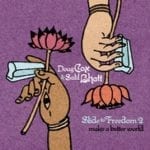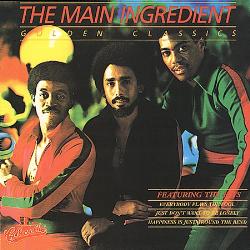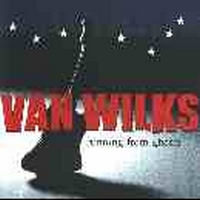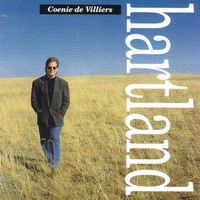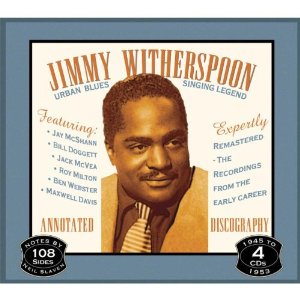Sue Raney – Complete Capitol Years 1956-1960 – 2CD
€20,00 €15,73
Description
Sue Raney (McPherson, Kansas 1939) remains one of the most talented and sensitive singers ever to grace both jazz and pop music. Her deceptively easy mastery was honed by years of experience, beginning with fronting her own 15-minute TV show as a teenager.
A 1956 appearance on the Jack Carson radio show led to a spot on Ray Anthony’s TV show and a three-month stint at the Hollywood Palladium. Signed by Capitol Records, she made her debut single with the popular The Careless Years and won an impressive accolade when Capitol assigned Nelson Riddle to arrange and conduct her first album, When Your Lover Has Gone, in 1957. With her easy-to-listen-to ballad style, she drew a teen-age following in a music world that was then largely limited to rock ‘n’ roll.
Between 1958 and 1959 she made three singles with Jack Marshall’s orchestra, years during which she also recorded her second Capitol album, Songs for a Raney Day, with orchestra arranged and conducted by Billy May. Her last work for Capitol was two further singles accompanied by Bill Holman’s music.
In these early recordings she demonstrated a rare combination of gifts—how to be a completely natural singer and one also equipped with the discipline, training and sensitivity to understand a song and communicate its essence to the listener.
Track Listing:
CD 1
1. Ev’rytime (Lavello-Leven) - 2:46 2. The Careless Years (Lubin) - 3:05 3. What’s the Good Word, Mr. Bluebird (Livingston-Roberts-Hoffman) - 2:07 4. Don’t Take My Happiness (Stone) - 2:38 5. Please Hurry Home (Gaze-Raleigh) - 1:51 6. Till There Was You (Wilson) - 2:36 7. When Your Lover Has Gone (Swan) - 2:59 8. I Stayed Too Long at the Fair (Barnes) - 3:05 9. If I Could Be with You One Hour Tonight (Creamer-Johnson) - 2:20 10. My Ideal (Robin-Whiting-Chase) - 3:28 11. It Looks Like Rain in Cherry Blossom Lane (Leslie-Burke) - 2:24 12. It’s Easy to Remember (Rodgers-Hart) - 3:02 13. Moon Song (Coslow-Johnston) - 4:00 14. Heart and Soul (Carmichael-Loesser) - 2:54 15. If You Were There (Farrow-Ackers-Slawson) - 3:02 16. My Silent Love (Suesse-Heyman) - 3:18 17. I Remember You (Schertzinger-Mercer) - 4:18 18. I’ll See You in My Dreams (Jones-Kahn) - 2:29 19. My, My, How the Time Goes By (Shelley-Kaye) - 2:08 20. Periwinkle Blue (Webster-Livinsgton) -2:16
CD 2
1. Ever (Sue Raney) - 2:49 2. The Restless Sea (Davie-Moore) - 3:10 3. I Don’t Look Right Without You (Singlenton-Coleman) - 1:53 4. Swingin’ in a Hammock (Seymour-Flynn-Wendling) - 2:01 05. I Get the Blues When It Rains (Stoddard-Klauber) - 2:45 6. Impossible (Allen) - 2:55 7. A Blossom Fell (Barnes-Cornelius-John) - 2:07 8. Wrap Your Troubles in Dreams (Barris-Moll-Koehler) - 2:36 9. The Whippoorwill Song (Ellis) - 2:11 10. Rain (Ford) - 2:47 11. Rain on the Roof (Ronell) - 2:08 12. Blue Tears (Raney) - 2:48 13. Exactly Like You (McHugh-Fields) - 2:34 14. Wanna’ Laugh? (Coleman) - 2:30 15. My Prayer (Boulanger-Kennedy) - 3:17 16. September in the Rain (Warren-Dubin) - 2:38 17. Biology (Wayne-Edwards) - 2:01 18. Too Soon (Shores-Cohn) - 2:30 19. The Word Got Around (Smith-Roberts) - 2:00 20. One-Finger Symphony (Winn-Alperson,Jr) - 2:26
Sources & recording details:
Sue Raney, vocals in all tracks, with
CD 1:
Ray Anthony and His Orchestra (#1) (Capitol EAP-1-823)
Capitol Tower, Hollywood, December 17, 1956
Bob Bain's Music & Quartet (#2-4) (Capitol 45-17108, 45-17105, 45-17106)
Capitol Tower, Hollywood, May, 28, 1957
Orchestra arranged & conducted by Warren Barker (#5) (Capitol 45-17423)
Capitol Tower, Hollywood, August 30, 1957
Orchestra conducted by Nelson Riddle (#6) (Capitol 45-17765)
Capitol Tower, Hollywood, October 29, 1957
Orchestra conducted by Nelson Riddle (#7-18) From the album: “When Your Lover Has Gone” (Capitol T-964)
Capitol Tower, Hollywood, December 12,19,23, 1957
Jack Marshall's Orchestra & Chorus (#19 & 20) (Capitol 45-19774 & 45-19772)
Capitol Tower, Hollywood, July 28, 1958
CD 2:
Jack Marshall's Orchestra (#1-4) (Capitol 45-19775, 45-19773, 45-31697 & 45-31696)
Capitol Tower, July 28, 1958 & May 16, 1959
Orchestra arranged & conducted by Billy May (#5-16) From the album: “Songs For A Raney Day” (Capitol ST-1335)
Capitol Tower, Hollywood, October 19,21,26, 1959
Bill Holman's Music (#17-20) (Capitol 45-33176, 45-33177, 45-34170 & 45-34172)
Capitol Tower, Hollywood, February 2, July 11, 1960
The CD booklet includes the complete personnel on each recording session.
Original sessions produced by Lee Gillette, except CD 1, #7 Nelson Riddle, and CD 2, #5-20 Ed Yellin.
Photos: Fresh Sound Records archive
Compiled & produced for CD release by Jordi Pujol
Reviews:
1. AllMusic - Dave Nathan
In the late '50s and early '60s, Capitol Records had two leading jazz-oriented pop singers on its roster -- June Christy and Peggy Lee -- and then added another young singer, Sue Raney. Raney cut a few albums which seemed to quickly disappear, never to be heard from again until now [...] On the 1958 release 'When Your Lover Has Gone,' Raney is supported by the estimable Nelson Riddle, whose arrangements and orchestrations have graced the recordings of many of the top singers of the last four decades (among the more notable, Ella Fitzgerald and Frank Sinatra). The second album, 'Songs for a Raney Day,' was cut under the leadership of another Hollywood music icon, Billy May. His arrangements on this album are much softer than the blaring brass a la the discs he cut with Sinatra and Anita O'Day. This is a gentler, softer May, appropriate for an album of songs that capture the essence and moods of rainy weather. Although very young when these sessions were recorded, there's more than a hint of the consummate artistry that was to characterize Raney's singing over the next 40 years. The style, diction and appreciation for good melodies which became a staple of Raney's albums are already evident, and each album has well-known standards. But there are songs penned by composers not often recorded, like Ann Ronell's "Rain on the Roof," a reminder that Ronell did much more than "Willow Weep for Me." Unfortunately, the promise created by these two albums never quite materialized. Raney, despite her outstanding recordings, never entered studios with the frequency commensurate with her talent, which doesn't say much for the music business.


